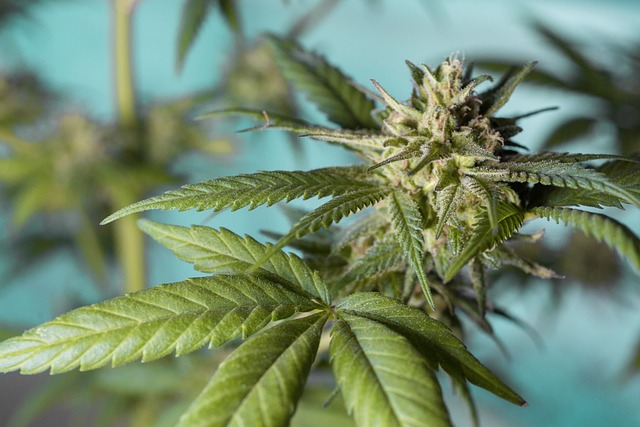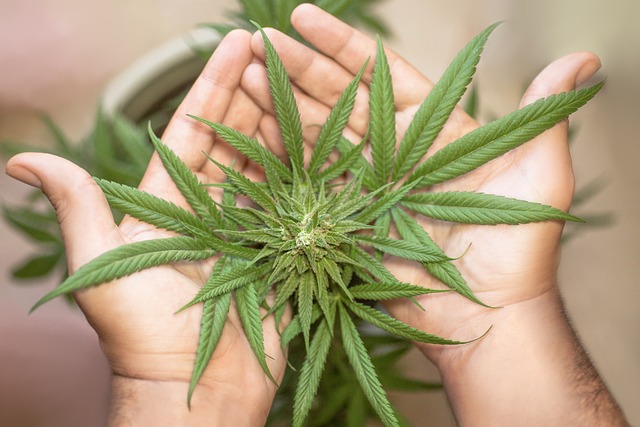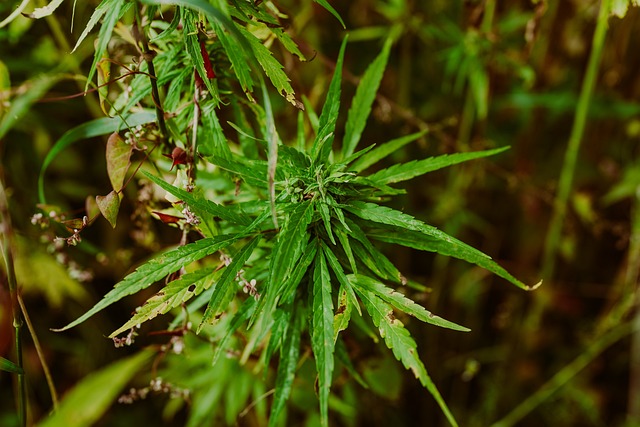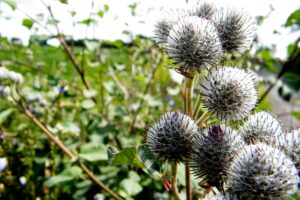
THCA flower is gaining attention as a non-psychoactive alternative for managing pain, with emerging research suggesting its effectiveness for conditions like neuropathic and inflammatory pain. Unlike its psychoactive counterpart THC, THCA interacts with the endocannabinoid system to potentially alleviate discomfort without altering one's mental state. Users often report significant analgesic benefits from THCA flower, which may be enhanced by the presence of other cannabinoids and terpenes within the cannabis plant. Its anti-inflammatory properties make it a promising option for pain relief in conditions such as arthritis. However, users should be aware of possible side effects like gastrointestinal issues or drowsiness and consult healthcare professionals, especially if they have pre-existing health concerns or are taking other medications to avoid potential interactions. Starting with a low dose and using high-quality products from reputable sources, along with proper dosing and administration methods like vaporizing, can help maximize the benefits of THCA flower for pain relief while minimizing risks. This makes THCA flower a compelling subject of interest for those seeking safe and effective natural alternatives to traditional pain management strategies.
Exploring the therapeutic potential of THCA flower, particularly its role in alleviating pain, this article sheds light on the latest scientific findings and practical guidance for safe consumption. From its mechanism of action to potential side effects, we delve into how THCA flower can be a beneficial addition to pain management regimens. Understanding both the benefits and risks associated with its use is crucial for those considering THCA flower for pain relief. Join us as we navigate the complexities of this cannabinoid’s effects, ensuring informed decisions for optimal health outcomes.
- Unraveling THCA Flower's Role in Pain Relief: A Deep Dive into Therapeutic Benefits
- Navigating Potential Side Effects of THCA Flower Use: What Users Should Know
- Understanding the Science Behind THCA and Its Impact on Pain Management
- Mitigating Risks: Best Practices for Consuming THCA Flower Safely and Effectively
Unraveling THCA Flower's Role in Pain Relief: A Deep Dive into Therapeutic Benefits

Delta-9 tetrahydrocannabinol (THC) is well-known for its psychoactive effects, but before it undergoes decarboxylation through heat, its raw form, tetrahydrocannabinolic acid (THCA), holds promise in the realm of pain management. THCA flower, which contains the non-psychoactive THCA, is gaining attention for its potential therapeutic benefits without the intoxicating properties associated with THC. Preliminary research suggests that THCA interacts with the body’s endocannabinoid system, influencing pain sensation by modulating neurotransmitter release and immune system responses. This interaction may offer relief from various types of pain, including neuropathic and inflammatory discomfort. Users report that THCA flower can provide effective analgesic effects, particularly when used in conjunction with other cannabinoids and terpenes found in the cannabis plant. The anti-inflammatory properties of THCA are believed to be beneficial for conditions such as arthritis, where chronic pain is a significant issue. As interest in natural and alternative remedies for pain relief continues to rise, the role of THCA flower in this area is an exciting area of study that may open new avenues for safe and effective pain management strategies.
Navigating Potential Side Effects of THCA Flower Use: What Users Should Know

Users considering THCA flower for pain relief should be aware of its potential side effects to ensure safe and effective use. Tetrahydrocannabinolic acid (THCA) is a non-psychoactive cannabinoid found in hemp and cannabis plants, known for its analgesic properties. While it offers promising benefits for managing pain without the psychoactive effects of THC, users may still experience certain side effects. Common reports include mild to moderate gastrointestinal issues such as nausea or digestive discomfort, which typically subside as the body adjusts to the compound. Additionally, some users may notice dry mouth or eyes, which can be alleviated by staying hydrated and using artificial tears if necessary. It’s also possible for individuals to experience drowsiness, making it advisable to consume THCA flower in a safe environment where operating heavy machinery or driving is not required. Those with pre-existing health conditions or taking other medications should consult with a healthcare professional before incorporating THCA flower into their pain management regimen, as interactions can occur. Understanding these side effects and how they may impact an individual’s well-being is crucial for informed decision-making when using THCA flower for pain relief. Users should always start with a low dose to gauge their body’s response and adjust accordingly to minimize any adverse effects.
Understanding the Science Behind THCA and Its Impact on Pain Management

Tetrahydrocannabinolic acid (THCA) is a non-psychoactive cannabinoid found in the cannabis plant, often present in high concentrations in raw or uncured cannabis flowers. Its potential as a natural analgesic has garnered significant attention within the realms of pain management and holistic health practices. The therapeutic effects of THCA are attributed to its interaction with the body’s endocannabinoid system, which plays a crucial role in regulating pain, inflammation, and the immune response. Research suggests that THCA may offer effective pain relief due to its binding affinity for certain receptors in the endocannabinoid system, particularly CB1 and CB2 receptors, without the psychoactive effects associated with its decarboxylated form, THC. This selective activity is particularly promising for individuals seeking pain management options that minimize mind-altering side effects. Studies indicate that THCA may exert anti-inflammatory properties, which could be beneficial in conditions characterized by persistent inflammation and pain, such as arthritis or neuropathy. Additionally, the analgesic effects of THCA are thought to stem from its ability to inhibit the reuptake of anandamide, an endocannabinoid involved in pain signaling, thus increasing its availability within the nervous system. As a result, the use of THCA flower for pain relief is an area of growing interest and research, with potential implications for those seeking alternative or complementary approaches to managing their discomfort.
Mitigating Risks: Best Practices for Consuming THCA Flower Safely and Effectively

Consuming THCA flower, which is the raw form of cannabis that contains tetrahydrocannabinolic acid, a non-psychoactive precursor to THC, can offer potential pain relief benefits. However, it’s crucial to approach its consumption with caution to mitigate potential risks and enhance safety. To ensure a positive experience while using THCA flower for pain relief, adherence to best practices is paramount.
Firstly, always source your THCA flower from reputable dispensaries or licensed producers to guarantee the product’s purity and potency. Additionally, start with a low dosage to gauge individual sensitivity and gradually increase as needed. Proper dosing can prevent adverse effects and maximize the pain-relieving properties of the flower. Utilizing a vaporizer rather than smoking is recommended, as it provides a cleaner intake method, reducing the potential harm associated with smoke inhalation. Furthermore, consider the strain’s specific effects; some strains may be more effective for certain types of pain relief compared to others. Hydration and proper nutrition can also enhance the benefits of THCA, ensuring the body is well-equipped to process and respond to its effects. Lastly, consult with a healthcare professional before integrating THCA flower into your pain management regimen, especially if you have underlying health conditions or are taking other medications. By following these guidelines, individuals can safely and effectively use THCA flower for pain relief while minimizing the risk of adverse side effects.
THCA flower, a non-psychoactive cannabinoid, has garnered attention for its potential in providing natural pain relief. This article has delved into the therapeutic benefits of THCA flower and how it can be a viable option for those seeking alternatives to conventional pain management. While the evidence supporting its use is promising, it’s imperative to approach its consumption with careful consideration of potential side effects, as outlined in our exploration. Users are encouraged to adopt best practices for safe and effective use, ensuring they receive the intended therapeutic benefits without compromising their well-being. In conclusion, THCA flower may offer a valuable addition to pain relief regimens when used responsibly.







